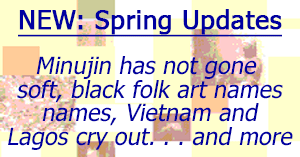Has Marta Minujín gone soft? Don’t count on it, not for an artist who brings a creature to New York so large and colorful that the half-costumed, half-naked regulars in Times Square cannot begin to compete, not even for your selfies. There is no getting around it, although you can comfortably settle in below and look around. You never know what you will see.
Entering her eighties, Minujín is still raising her voice—about book burnings, dictatorship, sexual norms, and such lesser details as the pandemic. She means her retrospective at the Jewish Museum as at once a battle cry and a celebration, much like its title, “Arte! Arte! Arte!” It ranges from painting and sculpture in bronze to torn mattresses, installation, and video. Still, it opens, like her approach to Times Square, with soft sculpture and what I took for a smile. You can see it through glass doors well before you enter. It may be whimsical or unnerving, but it is still an invitation, through March 31—and I bring this together with earlier reports on artists who instead present obstacles to admission as a longer review and my latest upload.
Born to Russian Jews in Buenos Aires, Minujín had a conventional arts education and started her career conventionally enough, but then late modern convention called for destroying painting as we know it and casting aside its materials. She got to work with Albert Greco, one of the country’s leading artists, and adopted his thick surface, dark palette, and sobriety, but in lacquer, pigment, and glue. Soon, though, she lightens up, in busy abstraction with bright colors and a touch of Surrealism. Let the party begin. This was the 1960s, when mayhem and a party had to include free love. She made her first soft sculpture in 1963 from, sure enough, a mattress.
Her sculpture in Times Square, for the full show’s first week or so, is a return to her roots—or maybe rootlessness. She has lived in Central Park as well as Argentina and Washington, D.C. Her New Museum installation took a full floor for its many passages, enough to disorient anyone. Her retrospective, her first in New York, has an immersive room as well. If Yayoi Kusama can have people lining up around the block for her vacuous “infinity rooms,” surely Minujín deserves the same. To my mind a soul mate, Pipilotti Rist, had two Chelsea galleries during the run, Hauser & Wirth through January 13 and Luhring Augustine through February 3, to pour her body out.
Soft sculpture returns to Minujín’s roots in other ways as well. It connects to everything that she has done, however hard and firm. First, it supplies the motifs and materials. Its broad stripes blend, well, seamlessly into the show’s second series, for all-over painting in collage. There she cuts the strips from mattresses, without a hint of folk art or quilting. As one title has it, it is her Soliloquy of Mixed Emotions.
Second, it relates art to the body, hers or yours. She returned to painting in 1975 for Frozen Sex. A self-portrait is almost Cubism, but in shades of pink. Third, it verges on performance, like her stay in the park, and hers began with “happenings” (or, as she sometimes had it, “kidnappenings”), in conjunction with Alan Kaprow and Robert Rauschenberg, who shared her interest in collaboration and dance. Of course, she kept her sense of humor and, like the soft sculpture, invited one in. Opening events for Frozen Sex, at what is today the Americas Society, included a strip tease.
Last, it is political. Minujín could have better timing, but she moved back home in 1975, just in time for a military coup, and she responded with “Toppled Monuments.” Franz Kafka’s America greets immigrants with only a sword in place of the torch in the Statue of Liberty. Her Liberty is merely lying down, perhaps for a well-earned rest. Where there is destruction, there must also be building, and she created an entire Parthenon of Books— in Buenos Aires and again in Germany, on the site of Nazi book burnings. In photos from 1985, she and Andy Warhol trade ears of corn in payment for the Latin American debt.
Not that all is despair. She also built a Tower of Babel of books, and she likes the babble. She calls a strip collage Endemic, War, and 1000 Other Things. She could be barely able to grasp the horrors, but she is still joking. She is also communicating. You could step right into her old-fashioned phone booth, or Minuphone, back in 1969 and place a call. It turned out psychedelic sounds and colors, but you could still come with her afterward to Soft Gallery for a drink.
Read more, now in a feature-length article on this site.
